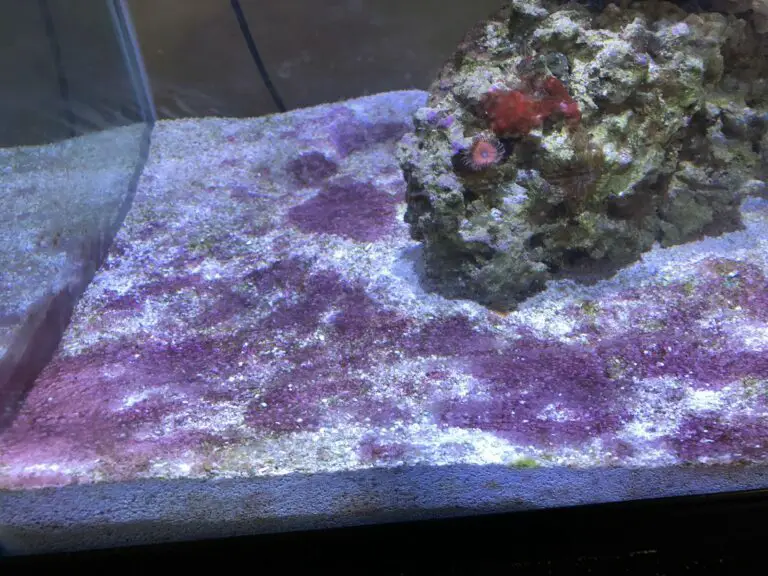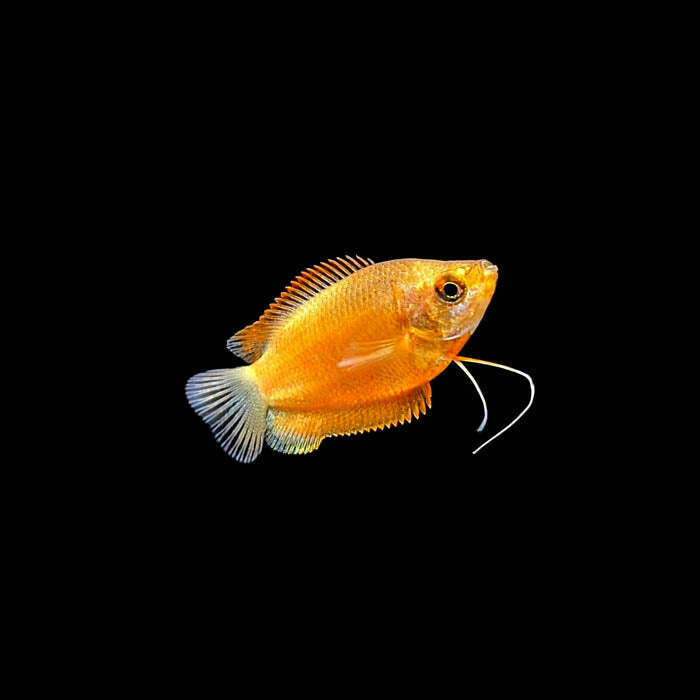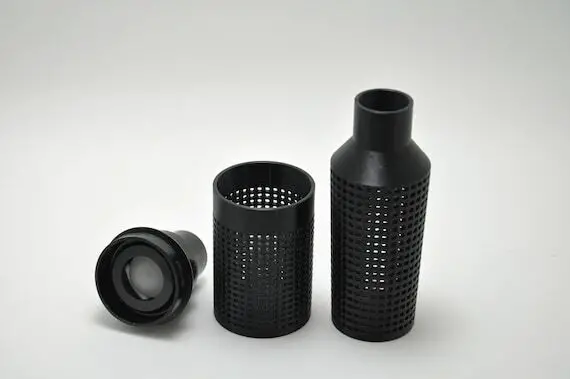Fish That Are Omnivores: 14 Facts Need to Know?
Omnivorous fish eat both plants and animals. Some examples are perch, sunfish, barramundi, darters, angelfish, catfish, and others. They usually eat a variety of things like tiny creatures, worms, insects, and even plants and algae.
Omnivorous fish can eat many kinds of food, which helps them live in different places with different nutrients. They can digest lots of different foods, it helps them do well in areas where other fish might struggle because they need certain nutrients.
These fish are a good choice for your aquarium because they eat both plant and animal foods. They like insects, worms, algae, small creatures, and more that they find where they live. This is great for people who want their fish to have a varied diet and stay healthy.
5 Examples of Omnivorous Fish
Here are five examples of omnivorous fish species:
- Tilapia (Oreochromis spp.):
- Tilapia are perhaps one of the most well-known omnivorous fish species.
- They have a diverse diet that includes aquatic plants, algae, insects, and detritus.
- Tilapia are commonly found in freshwater environments and are also popular in aquaculture due to their adaptability to various food sources.
- Carp (Cyprinus carpio):
- Carp are renowned omnivorous fish and are known to consume a wide range of food items.
- They graze on aquatic plants, algae, insects, small crustaceans, and even fish eggs.
- Carp’s adaptability to different food sources has contributed to their widespread distribution in freshwater ecosystems around the world.
- Pacu (Piaractus brachypomus):
- Pacu are omnivorous fish closely related to piranhas, but they have a broader diet.
- While they do eat small fish and invertebrates, pacu are also known to consume fruits and nuts that fall into the water, making them unique among omnivorous fish.
- Green Sunfish (Lepomis cyanellus):
- Green sunfish are omnivores commonly found in North American freshwater systems.
- Their diet consists of aquatic insects, small crustaceans, fish fry, and plant material like algae and aquatic vegetation.
- Bluegill (Lepomis macrochirus):
- Bluegill, another member of the sunfish family, are opportunistic omnivores.
- They feed on aquatic insects, small fish, crustaceans, and also consume a variety of plant matter, including algae and aquatic plants.
These examples highlight the diversity of omnivorous fish and their ability to adapt to a range of food sources, contributing to their success in different aquatic environments.
Are Fish Herbivores Carnivores Or Omnivores?
Fish are generally omnivores, meaning they consume both plant and animal material. Though there are some exceptions to this rule, most fish will eat a variety of foods that include algae, insects, worms, mollusks and other small organisms. Some species may even feed on larger prey such as crustaceans or other fish!
Omnivorous Fish Food
Omnivorous fish have diverse diets that can include both plant and animal matter. Their food sources vary depending on their natural habitat, but here are some common types of food that omnivorous fish may consume:
- Aquatic Plants: Many omnivorous fish graze on aquatic plants, including submerged, floating, and marginal vegetation. They may feed on the leaves, stems, and roots of these plants.
- Algae: Algae are a common food source for omnivorous fish. They may scrape algae off rocks or substrate or consume free-floating algae (phytoplankton).
- Insects: Aquatic insects such as mosquito larvae, mayfly nymphs, and aquatic beetles are often on the menu for omnivorous fish. These insects provide a protein-rich diet.
- Crustaceans: Small crustaceans like shrimp, amphipods, and copepods are a favorite food source for many omnivorous fish species.
- Worms and Larvae: Aquatic worms and insect larvae, including bloodworms and midge larvae, are commonly consumed by omnivorous fish.
- Fish Eggs: Some omnivorous fish species may feed on the eggs of other fish, especially during spawning events.
- Small Fish: While omnivores primarily focus on plant and invertebrate matter, they may opportunistically prey on smaller fish, especially when other food sources are scarce.
- Detritus and Organic Debris: Bottom-feeding omnivorous fish often consume detritus, decaying plant material, and organic debris found on the substrate. This helps in nutrient recycling.
- Fruits and Nuts: In some cases, omnivorous fish that inhabit regions with overhanging trees or bushes may consume fruits and nuts that fall into the water.
- Carrion: When dead animals or fish are available, omnivores may scavenge on carrion, further contributing to nutrient cycling.
It’s important to note that the specific diet of omnivorous fish can vary greatly among species and depends on their natural habitat and what food sources are readily available. Providing a balanced diet in captivity for omnivorous fish, such as a mixture of high-quality commercial fish pellets, vegetables, and live or frozen food like brine shrimp or bloodworms, is essential for their health and well-being.
Are Small Fish Omnivores?
Little fish usually eat both plants and animals. They enjoy foods like water plants, algae, small creatures, insect babies and worms. Also sometimes even tiny fish or other animals if they find them. This way, they can live well in their homes by eating whatever food is around.
Are Large Fish Omnivores?
Big fish eat both plants and animals. They like different foods like tiny water animals, tiny plant creatures, algae, and even other small fish. Some big fish also look for food from dead or dying animals around them.
Omnivore Fish for Aquarium
Omnivorous fish are good for your aquarium because they eat both meat and plants. They need a diverse diet, so make sure to give them lots of different foods to stay healthy and happy. Some examples of omnivorous fish for your aquarium are Goldfish, Tetras, Barbs, Gouramis, and Rainbowfish.
What Fish Eat Both Meat and Plants?
Fish that eat both meat and plants are classified as omnivorous fish. These fish have a diet that includes a mixture of animal and plant-based food sources. Here are some examples of fish that are known to be omnivorous:
Tilapia (Oreochromis spp.): Tilapia are a classic example of omnivorous fish. They consume a variety of plant matter, algae, insects, and small aquatic organisms.
Carp (Cyprinus carpio): Carp are highly adaptable and opportunistic omnivores. They feed on aquatic plants, algae, small crustaceans, insects, and detritus.
Pacu (Piaractus brachypomus): Pacu, closely related to piranhas, are omnivorous fish. Their diet includes fruits, nuts, seeds, and small aquatic animals.
Green Sunfish (Lepomis cyanellus): Green sunfish are omnivores that consume aquatic insects, small fish, crustaceans, and plant material such as algae and aquatic vegetation.
Bluegill (Lepomis macrochirus): Bluegill, another member of the sunfish family, are opportunistic omnivores. They eat aquatic insects, small fish, crustaceans, and plant matter.
Rainbowfish (Melanotaeniidae family): Many species of rainbowfish are considered omnivores. They consume both small aquatic invertebrates and algae.
Convict Cichlid (Amatitlania nigrofasciata): Convict cichlids are known to have a diverse diet that includes insects, small crustaceans, and plant material.
Gouramis (Osphronemidae family): Some gourami species are omnivores, and their diet may consist of insects, small crustaceans, and plant matter.
Angelfish (Pterophyllum scalare): Angelfish are considered omnivorous and consume a variety of food, including small aquatic organisms and plant material.
Guppies (Poecilia reticulata): Guppies are known to be omnivorous fish, feeding on a combination of algae, small aquatic invertebrates, and even mosquito larvae.
Omnivorous fish can eat many different foods, which makes them good for different places in the water. Their diet might change depending on where they live and what food is around. In a tank, make sure to give them a mix of animal and plant foods to keep them healthy.
Herbivore Fish Examples
Herbivorous fish are a type of fish that primarily consume plant-based food sources. Examples include Oscars, Plecos, and Suckermouth Catfish. These species typically feed on algae, as well as other aquatic plants and vegetation.
To providing an essential source of nutrients to fish’s diet. These foods help keep their tanks clean by consuming leftover organic material.
Are Fish Carnivores?
Most fish eat other animals like worms, crabs, clams, and even small fish. Some fish also eat plants or algae along with their regular animal food. Although most water creatures are naturally carnivores, there’s still a lot of variety in what they like to eat depending on their species.
Preferred Food Sources of Omnivorous Fish
Omnivorous fish are incredibly adaptable, and their diets can vary widely. Here are the primary food sources they rely on:
Aquatic Plants and Algae: Many omnivorous species obtain a significant portion of their nutrition from aquatic vegetation. This includes various types of submerged and floating plants.
Small Aquatic Animals: Insects, crustaceans, and aquatic worms are favorite menu items for omnivorous fish.
Fish Eggs: Some omnivorous fish are known to consume the eggs of other fish, adding to their diverse diet.
Carrion: When dead animals or fish are available, omnivores won’t hesitate to scavenge and recycle nutrients.

Are All Fishes Omnivores?
No, not all fish are omnivores. There are many different kinds of fish, and each one eats different things. For instance, some fish like carp, catfish, and trout eat plants or algae, while others like piranhas and barracudas hunt small animals.
Some fish are only herbivores (they eat plants), and others are carnivores (they eat animals). Omnivorous fish eat both plant-based foods like worms and bugs, and small fish they find in the water.
They have to eat whatever food is around to survive in their homes, which can be anything from tiny creatures to plants depending on where they live.
Knowing what kind of food a fish likes is important if you want to choose the right tank companion or keep a healthy aquarium!
Are Salmon Omnivores?
Yes, salmon are omnivores. They eat lots of different foods to get what they need. In the wild, they eat other fish and small water creatures like shrimp, crayfish, and insects. But sometimes, they eat algae and plants for energy and nutrients.
So, besides being carnivores (eating animals), they can also be herbivores (eating plants). Being omnivores helps salmon do well in their homes because they can eat a variety of things.
What Freshwater Fish are Omnivores?
Freshwater fish are diverse, and many of them are omnivores, which means they eat both plants and animals. This gives them lots of different foods to choose from. Some common examples of omnivorous freshwater fish are carp, catfish, sunfish, bass, sturgeon, pike, and perch.
These fish often eat things like algae or small creatures like crustaceans. They also like worms and bugs they find near the water’s surface or at the bottom. Some fish like trout can become omnivores when there’s not enough of their preferred food, so they eat whatever is available, even plants.
Are Fish Omnivores?
Conclusion
Omnivorous fish are special because they can eat many different things like plants and animals. This helps them live in different places and keeps the water healthy.
So, when you see fish in the water, remember they have a diverse diet. Knowing what omnivorous fish eat gives a peek into the underwater world, where staying alive often means being a flexible eater.






